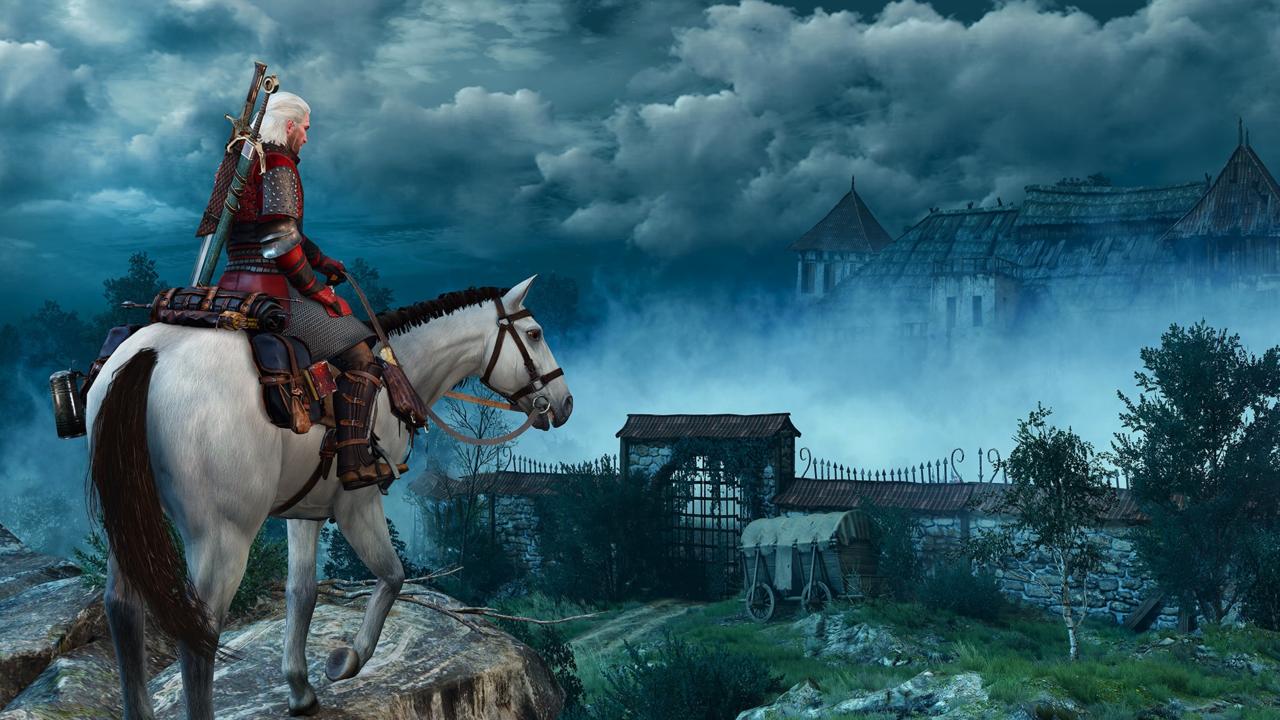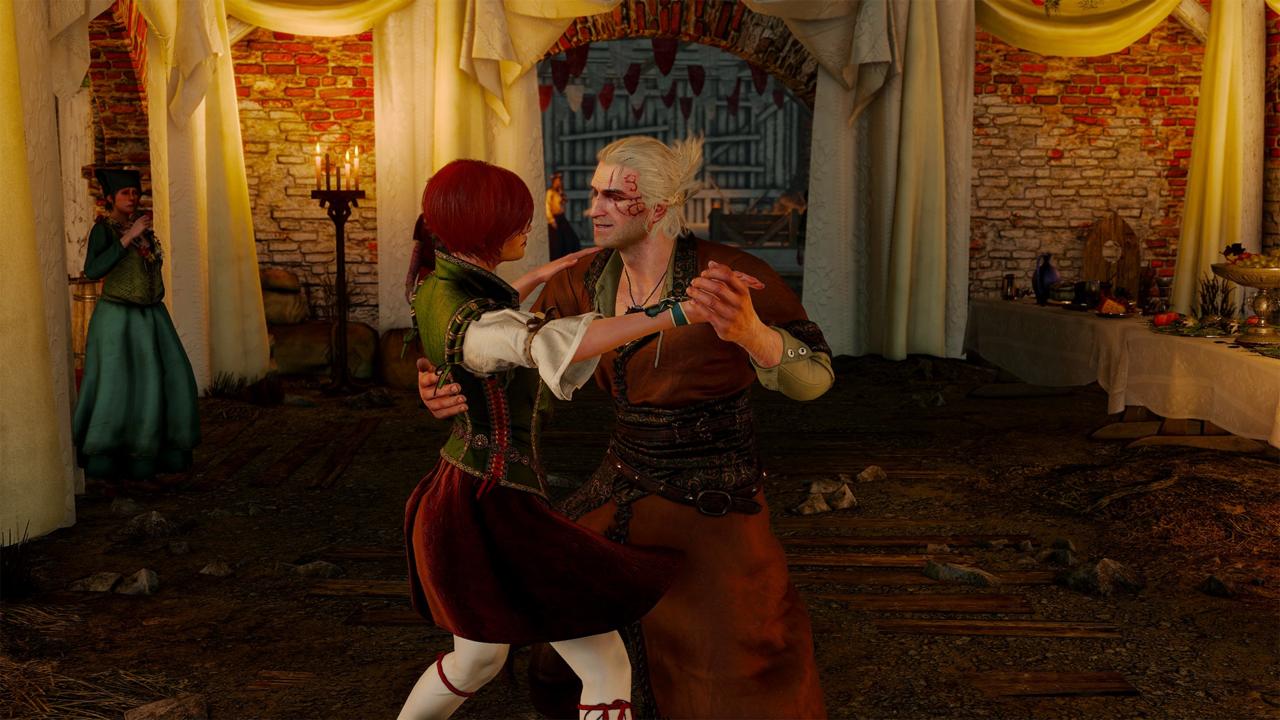The Witcher 3: Hearts of Stone is at once a horror story, a romance, a character study, and a classic fairy tale. And somehow, these disparate parts mesh to form a cohesive whole.
This is CD Projekt Red's first paid expansion for its masterful RPG, and it fits seamlessly into Geralt's narrative. Although it's meant for late-game characters around level 30, it's available at any point in your playthrough. And like many experiences in The Witcher 3, the expansion's main draw is its twisting storylines and vivid inhabitants.
It's difficult to talk about these elements without ruining the experience as a whole. CD Projekt Red presents its own dark take on weddings, haunted houses, and the story of the prince and the frog. Quests never resolved how I expected them to, and seldom how I hoped. They even ventured into metaphysical environments, and gorgeous as they were, there's a haunting presence to them. Hearts of Stone runs the gamut of fantasy tropes, but subverts every one. It's this willingness to take successful risks that sets these quests, and the story they compose, apart.
Many of these storylines trace back to one man: Gaunter O'Dimm. Geralt calls him the Merchant of Mirrors. Others know him as the Man of Glass. He's a character who makes you feel uneasy with a glance and, even when he seemed relaxed, I always had my thumb hovering over the attack button. You get the sense he knows far more than he lets on. Hearts of Stone paints him in a complex fashion, melding his odd behavior with a strange charm, thereby creating someone who doesn't fit any archetype.

But there are good people in the Northern Kingdoms, too, however few and far between. Hearts of Stone reintroduces Shani, the medic from Oxenfurt, who reprises her role from the original Witcher. She's my favorite character here, and maybe in all of The Witcher 3. She's equal parts charming, caring, and clever. In fact, Shani's much smarter than Geralt: your responses have a time limit more frequently when speaking with her. She's quick witted, but only gives that away the more time you spend with her.
Shani's mother wants her to find a husband, but she's too busy with her own medical practice, and doesn't feel the need for a serious partner. While many women in The Witcher 3 play minor roles, often supplemental to men, Shani is a vivid character in her own right. She's a foil to both Geralt and the dark world he lives in--maybe that's the reason for their romantic past.
If you don't remember, or weren't aware of that history from the earlier games, it doesn't matter too much. CD Projekt Red conveys it with expert dialogue and subtle visual cues. Pay attention to Shani's shuffling feet. Listen as Geralt softens the edge in his voice. It's not often you can read into animated characters' body language, but here, Shani's lingering glances and Geralt's looser gestures tell a story in themselves. Shani even knows how many scars Geralt accumulated since last they met--27, to be exact. Once again, CD Projekt Red excels at capturing the details.
While many women in The Witcher 3 play minor roles, often supplemental to men, Shani is a vivid character in her own.
In between these living stories and fluid narratives are engrossing quests. I planned a heist, recruited team members, and cringed as my plan fell apart. I attended a wedding straight out of a sitcom, complete with praiseworthy comedy and awkward scenarios. Even in the absence of combat and supernatural catastrophes, Hearts of Stone pulled me through with expert pacing--for the most part.
CD Projekt Red implemented several mini-games throughout this expansion, most of which were tracking sections. Geralt's Witcher senses usually lead you only a few feet away to a breakable wall, or hidden object, that seem placed only to remind you of the man's superhuman detective abilities.
There's also an infuriating section that places you in a muddy pen as you try to herd pigs toward their respective troughs. The activity alone breaks the overall immersion, but Geralt's wide turns double the annoyance factor.

But these activities are negligible in the grand scheme of things. When combat does rear its head, there are unique enemies and tenacious boss battles to keep the dynamism alive. In fact, I saw three such enemies within the first two hours of Hearts of Stone. I fought a mage, a headless swordsman, and a hideous beast much larger than Geralt, with more complex attack patterns than many of the Northern Kingdoms' other denizens.
There's another enemy later, in a graveyard outside an abandoned manor, whose character design echoes the horrors of Pan's Labyrinth. It's grotesque. It's terrifying. Its abilities make for one of the more grueling encounters I've faced as Geralt. Defeating that thing was both a triumph and a relief.
The Witcher 3's first paid expansion is well worth the return to the Northern Kingdoms.
For all of its storylines, and all of its varied combat, Hearts of Stone houses deeper themes. Matters of regret, apathy, death, and the passage of time pervade every character's motivations. One woman laments the monster her husband turned out to be. "I've stopped wondering what you feel about me anymore," she says. "I don't feel anything," he replies. And in an intimate moment between Shani and Geralt, the former asks the Witcher if he worries about never falling in love. The response is up to you.
This thematic pulse elevates an already great batch of content. Hearts of Stone feels just as much a part of the narrative as any of the main game's quest lines, but stands on its own as a memorable adventure. It may have its negative moments and the pacing may be broken at certain intervals, but The Witcher 3's first paid expansion is well worth the return to the Northern Kingdoms.
There's a point when a character whistles the boss fight music. And just when you're sure one such encounter is coming, he walks away to that haunting tune, without so much as a fistfight. This is what Hearts of Stone does best. It takes our expectations and runs with them.



